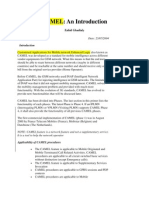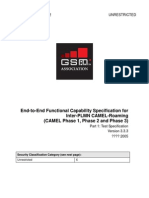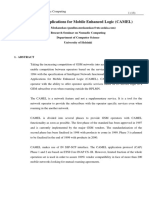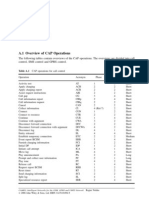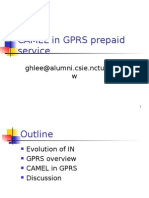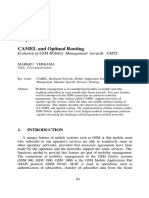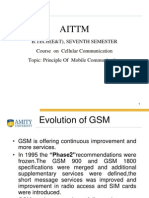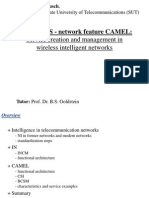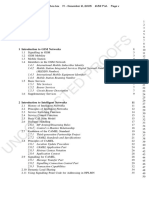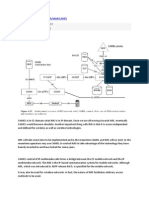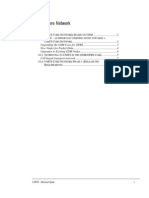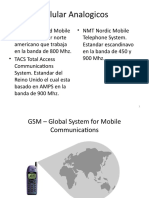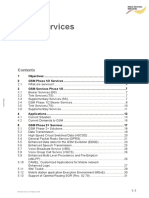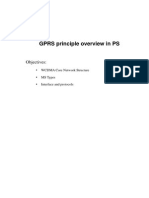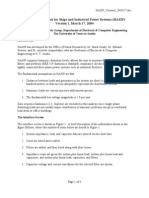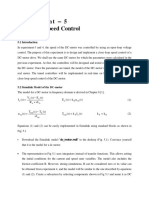CAMEL entities
gsmSCF: GSM Service Control Function gsmSSF: GSM Service Switching Function gsmSRF: GSM Specialized Resource Function gprsSSF: GPRS Service Switching Function
[edit] Phases
CAMEL was always intended to be specified in phases.[1] As of 2007, there have been 4 phases specified, each building on the previous phase.[2] Phases 1 and 2 were defined before 3G networks were specified, and as such support adding IN services to a GSM network, although they are equally applicable to 2.5G and 3G networks. Phase 3 was defined for 3GPP Releases 99 and 4, and hence is a GSM and UMTS common specification, while Phase 4 was defined as part of 3GPP Release 5. In line with other GSM specifications, later phases should be fully backwards compatible with earlier phases; this is achieved by means of the Transaction Capabilities Application Part (TCAP) Application Context (AC) negotiation procedure, with each CAMEL phase being allocated its own AC version.[3]
[edit] Phase 1
CAMEL Phase 1 defined only very basic call control services, but introduced the concept of a CAMEL Basic call state model (BCSM) to the Intelligent Network (IN). Phase 1 gave the gsmSCF the ability to bar calls (release the call prior to connection), allow a call to continue unchanged, or to modify a limited number of call parameters before allowing it to continue. The gsmSCF could also monitor the status of a call for certain events (call connection and disconnection), and take appropriate action on being informed of the event.[1] Phase 1 was defined as part of Release 96 in 1997.
[edit] Phase 2
CAMEL Phase 2 enhanced the capabilities defined in Phase 1. In addition to supporting the facilities of Phase 1, Phase 2 included the following:
Additional event detection points Interaction between a user and a service using announcements, voice prompting and information collection via in-band interaction or Unstructured Supplementary Service Data (USSD) interaction Control of call duration and transfer of Advice of Charge Information to the mobile station; The ability to inform the gsmSCF about the invocation of the supplementary services Explicit Call Transfer (ECT), Call Deflection (CD) and Multi-Party Calls (MPTY)
The ability, for easier post-processing, of integrating charging information from a serving node in normal call records[1]
Phase 2 was defined as part of 3GPP Releases 97 and 98, in 1998, although it is referenced in the stage 1 specification of Release 96.
[edit] Phase 3
The third phase of CAMEL enhanced the capabilities of phase 2. The following capabilities were added:
Support of facilities to avoid overload Capabilities to support Dialed Services Capabilities to handle mobility events, such as (Not-)reachability and roaming; Control of GPRS sessions and PDP contexts Control of Mobile Originated SMS through both circuit-switched and packet-switched serving network entities Interworking with SoLSA (Support of Localised Service Area). Support for this interworking is optional; The gsmSCF can be informed about the invocation of the supplementary service Call Completion to Busy Subscriber (CCBS)[2]
Phase 3 was released as part of 3GPP Releases 99 and 4 in 1999.
[edit] Phase 4
The fourth phase of CAMEL built on the capabilities of phase 3. The following features were defined:
CAMEL support for Optimal Routing of circuit-switched mobile-to-mobile calls The capability for the gsmSCF to create additional parties in an existing call (Call Party Handling) The capability for the gsmSCF to create a new call unrelated to any other existing call (Call Party Handling - new call) Capabilities for the enhanced handling of call party connections (Call Party Handling) Control of Mobile Terminated SMS through both circuit-switched and packet-switched serving network entities The capability for the gsmSCF to control sessions in the IP Multimedia Subsystem (IMS)[2] The gsmSCF can request the gsmSSF to play a fixed or a variable sequence of tones
With CAMEL Phase 4, it is possible that only a limited subset of the new functionalities is supported, in addition to the complete support of CAMEL Phase 3. Phase 4 was released as part of 3GPP Release 5 in 2002.


